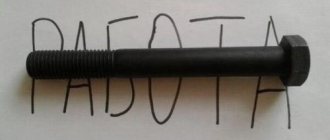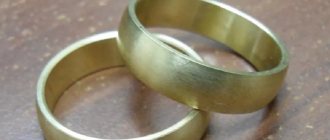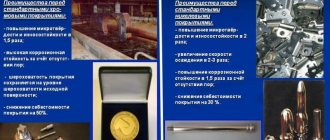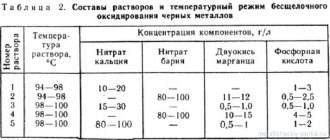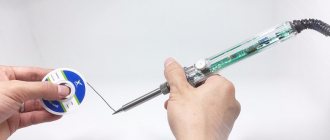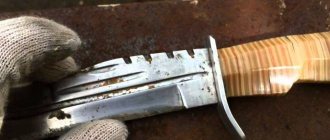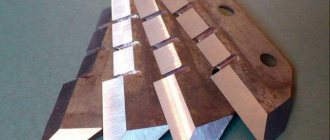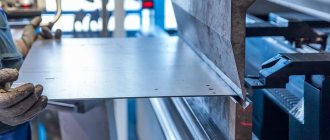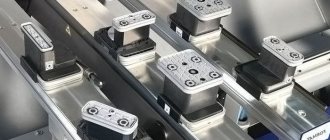Copper products have been popular for centuries. They have been used for a very long time for various purposes. Once upon a time this metal was much more valuable than it is now, it was even equated to gold. But technology did not stand still, so over time it was possible to obtain it faster and in larger quantities, which is why the cost fell. This made it possible to significantly expand the scope of use. Now not only jewelry and coins are made from copper, but also dishes, decorative items, and electronics parts. The high value of copper is explained by its characteristics: excellent corrosion resistance, ductility, thermal conductivity, and also has a beneficial effect on the human body. But even this metal suffers from oxidation and plaque, so in this article we will tell you how and with what to clean copper at home.
Features of copper
As stated above, copper has become very popular. This achievement was achieved due to many reasons, the main of which are:
- High thermal conductivity. Thanks to this, cooking food in such dishes takes much less time. Heating occurs evenly. In addition, the process allows you to significantly save on gas and electricity, which is especially important in our realities.
- Doctors recommend wearing copper products for diseases of the cardiovascular system. Often there is a normalization of blood pressure and an improvement in well-being.
- Durability. With proper care, the metal will last for many years.
- The appearance is very beautiful, no wonder the value is so high.
Over time, from contact with oxygen and heat, copper can oxidize and become covered with a green coating. This is a natural process that cannot be stopped, but you can clean copper at home if you know what and how.
Types of work performed
Roughness reduction can be carried out in a variety of ways:
- Abrasive processing, which involves the use of special equipment. However, it is divided into hand tools and specialized equipment installed in industry.
- The use of special drugs or certain chemicals.
- An electrochemical method that involves increasing the chemical activity of the attracted substances.
- Electrolyte-plasma technology.
In addition, to significantly improve the quality of the resulting product and speed up the process, several methods can be used at once. An example is the case when a special paste is added at the time of mechanical processing.
Why copper products need to be cleaned regularly
Copper products need to be cleaned regularly, since without proper care they can quickly suffer from green plaque and darkening. Dishes are especially susceptible to this, since they are constantly in contact with high temperatures. As a result, the appearance is lost quite quickly and blackness is formed, although it can be polished and returned to its original appearance. But you need to know what to clean and how to do it correctly.
Oddly enough, copper jewelry can first lose its appearance and then return it on its own. There is a lot of controversy about this, some say that a person’s well-being influences appearance. But this phenomenon is more likely due to frequent changes in pressure, temperature and moisture.
But copper has its drawbacks, especially when it comes to cookware. It must be regularly cleaned of oxide, otherwise toxic substances harmful to health will be released over time. Accordingly, the product cannot be used until cleaned and returned to normal condition. Oxidation, plaque and blackness are immediately visible to the naked eye, since everything is immediately reflected in the appearance.
How to remove scratches from a stainless steel sink?
Fine-grit sandpaper or Scotch Brite is abrasive enough to remove a scratch from a stainless steel sink. Buy sandpaper or an abrasive sponge from a hardware or hardware store if you want to try this method.
Interesting materials:
How do I create a new email account? How to create a special footer? How to create a folder on the desktop using hotkeys? How to create a folder in Google Chrome bookmarks on Android? How to create a rule in Outlook 2010? How to create a presentation with sound? How to create a presentation? How to create a slide with text? How to create your own email? How to create a bootable USB flash drive with uefi support?
Effective cleaning methods
There are many ways to restore metal to its original appeal. Each person uses the one that has been tested by him or someone he trusts. Let's find out how copper is cleaned at home today.
Method 1: Tomato ketchup
Don’t be surprised, you got it right, it’s the same tomato ketchup that we eat. It will clean copper from oxide even to a shine. So, how to do such a procedure? Apply it to a copper surface contaminated by oxidation and spread it evenly over the entire product. Leave it like this for 2 minutes. Rinse under warm running water and rinse everything off. The procedure allows you to quickly, cheaply and effortlessly clean copper from blackness and green deposits.
Method 2: Dishwashing Gel
If the problem is not very advanced, then you can deal with it using regular dishwashing gel. How to clean copper this way? Everything is very simple, we need a soft sponge, an appropriate detergent, water and of course a dirty product. There is no need for unnecessary explanation here, just apply the gel to the sponge and carefully clean it. After the procedure, wash everything off with water.
Method 3: Lemon
Lemon will help us against oxidation and plaque on copper. The method is recommended for use with large objects. If necessary, you can enhance the effect of citric acid using a bristle brush, which, due to its elasticity, better rubs the juice into the product. The procedure itself is very simple, just rub our item with half a lemon. Cleaning will take place chemically, since the metal will be purified due to the passage of appropriate reactions.
Method 4: Vinegar dough
The so-called vinegar dough will help us clean copper. Cooking will not be difficult even for a man. You need to mix vinegar and wheat flour in a 1:1 ratio and stir until smooth. Apply the resulting mixture evenly to the object and leave to dry. When the dough forms a hard crust, it is removed. Now polish until shiny using a soft sponge or other cloth.
Method 5: Vinegar and salt
The most radical way to clean copper without leaving home is to use vinegar and table salt. This method is used to clean copper products that have not been helped by any other procedure described above.
We take a stainless steel container and pour vinegar into it in such an amount that the necessary copper product fits there. Add a little table salt and stir. We immerse the item and put it on fire. After everything has boiled, you need to turn off the gas and leave everything until it cools completely. There is no need to speed up the process, everything should go on its own. After cooling, we take out our product, rinse it in water and wipe it.
Polishing in
to describe some important points that relate to such an important aspect of caring for a knife blade - polishing . We will talk about the most modern polishing methods, the products that are currently used and learn how to polish a blade so that it reflects everything around it.
Proper storage, blade sharpness and routine maintenance are very important to extend the life of your knife. Polishing is one of the maintenance stages and this stage is important. What is polishing?
Polishing is the finishing process of an object, which involves extremely smoothing the surface. In this case, various methods of influence are used, as well as many auxiliary tools and special means. Polishing must be carried out, for example, before etching the blade or applying a design.
How does polishing occur, thanks to which the blade acquires that almost ideal reflective ability?
Preparation
It is assumed that the knife blade has already been prepared, that is, it has already passed the first three phases: peeling, sharpening and finishing. This is followed by grinding, during which various irregularities, burrs, and old coating (if any) are removed from the surface. Grinding can be done either manually or using various devices.
After this, you can move on to the final stage - polishing.
Process
In order to achieve an ideal result, you will need to perform a fairly wide range of actions. In addition, it is worth saying that the polishing process takes a lot of time and effort.
If when grinding you can use electrical devices that allow you to achieve the desired result in a relatively short time, then polishing requires a more careful attitude to the surface and in this case you need to use special, low-speed polishing machines and do it yourself.
Main nuances of polishing:
- Using only mechanical action it is impossible to achieve an ideal result, so you have to resort to the help of special chemicals - polishing pastes or liquids .
- All actions are carried out with a constant reduction in the abrasive grain size. The smaller the grain size change step, the better the final result will be.
- Before starting work, you need to separate the blade from the handle, if possible.
- If you use sandpaper, you need to wrap it on a wooden block, so the contact of the abrasive with the surface being treated will be more uniform.
- It is better to start polishing with an abrasive with a grain size of 200-300 units ; you can use any polishing mixture together.
The final processing is carried out with a polishing machine at a speed of no more than 1750. Polishing paste is applied to a fabric or felt disk and carried out with gentle movements over the entire surface of the blade. Often, for polishing more expensive and exclusive knives, after the machine, polishing continues manually, on special wooden blocks using polishing agents.
Today, the market offers a fairly wide selection of polishing pastes with different compositions and for different applications. And only a few companies produce specialized products for polishing knives. One such company is Flitz. This is a world-famous American brand of polishing products that relatively recently appeared in Russia.
Flitz began over 40 years ago as a family business . Ulrich Jens founded the company with his father, mother and wife with the goal of creating high-quality metal polishing products
For the first three years, Flitz products were sold only at various exhibitions. The main goal during the first few years was to increase brand awareness. At first the company was known only within the United States, but now Flitz is known and bought all over the world.
Flitz products are made from high quality ingredients from Germany. Among the company's clients are many well-known companies and manufacturers of knives, equipment and equipment. Let's take a closer look at several products from Flitz.
Flitz Polish polishing paste
Flitz Polish is a concentrated cream that is unsurpassed in its ability to clean, polish, restore and protect. Nothing works faster, easier or better! Non-abrasive, non-toxic, non-flammable, acid-free, non-drying, non-sludge-free!
Suitable for polishing brass, copper, silver, chrome, stainless steel, nickel, bronze, gold, aluminum, tin. Not suitable for galvanic coatings. Removes rust, water stains, oxidation and fingerprints. Do not use on galvanized surfaces.
Characteristics:
- Weight: 150 g
- Acid free
- Non-toxic
- Incombustible
- Manufacturer: Flitz, USA
Flitz Polish polishing liquid
Flitz Liquid Polish is a high performance liquid cleaner and polish. Specially designed to clean and polish with ease and fluid economy. This concentrated formula uses three times less product than other liquids. Does not contain ammonia or abrasives.
Suitable for polishing brass, copper, silver, chrome, stainless steel, nickel, bronze, gold, aluminum, tin. Removes rust, water stains, oxidation and fingerprints. Not suitable for galvanic coatings.
Characteristics:
- Volume: 100 ml
- Acid free
- Non-toxic
- Incombustible
- Manufacturer: Flitz, USA
Flitz Gun/Knife Care Kit
The Flitz Gun & Knife Care Kit is designed to clean, polish and protect knives and guns. Removes and protects from: rust, fingerprints, water stains, gunpowder residue, tree sap, blood, salts!
Included:
- Flitz polish removes rust, fingerprints, powder deposits, water stains and other contaminants on blued, nickel and steel surfaces. Also, this polish is approved by professionals as an excellent cleaning product for hunting knives.
- A water-based spray containing a degreasing agent that removes fingerprints and oily stains.
- The wax works on all surfaces - burnished, nickel-plated, steel, wood, etc.
- A microfiber cloth is perfect for all of the listed cleaning and protective products. This napkin can be washed in a washing machine using a low spin cycle (WARNING: Do not add fabric softener when washing).
Characteristics:
- Does not contain abrasives
- Non-toxic
- Does not burn
- Manufacturer: Flitz, USA
Flitz pastes and liquids are environmentally friendly, non-toxic, water-based products.
Using these products, you can restore the shine to the ship's bell and copper parts of the steering wheel, bring the appearance of your hunting weapon to perfect condition, and polish the blades of your knives to a mirror shine.
Flitz Metal Polish will restore beauty to blades and protect them from corrosion, the negative effects of water and aggressive environments - by creating a protective microlayer on the polished surface.
Polish your knives only with the best products!
Cleaning Copper Coins
Copper coins have not been issued for a long time. But people still have them here and there. It is very good to store them in a presentable form, since such coins are already considered antiques and will only increase in value over time. It is useful to know how to clean a copper coin at home.
There are several proven ways to do this:
- If copper has been in contact with lead, it may develop a yellowish coating. Regular table vinegar 9% can handle it.
- How can you clean a copper coin from green deposits? Lemon or citric acid.
- Coins often also have a red coating. A 5% ammonia solution or ammonium carbonate will help fight it.
Types of diamond dust used
If you need to get shine when processing a metal product, then it’s practically impossible to do without special compounds made on the basis of diamond dust. There are products on sale that are designed for processing not only metals, but also other materials. In order not to make a mistake in your choice, you should consider the information below:
- Many manufacturers use yellow packaging to produce preparations intended for polishing ceramics and glass. However, some experts allow the use of such substances for finishing steel and other alloys, since ceramics and glass have similar physical and mechanical properties.
- Blue packaging is used to indicate a product intended for glass processing.
- The color red is used to represent an abrasive that can be used on steel and other alloys.
Diamond abrasive products are produced by a fairly large number of companies. The volume of packages can be different, the cost varies from several hundred to several thousand rubles.
In conclusion, we note that polishing should be carried out exclusively in several stages. If the product has increased roughness and you immediately begin processing with fine abrasive, then achieving the desired result will be difficult, it will take a lot of time and the materials used.
Bringing back shine to copper products
Very often the question is quite simple: how to clean copper and restore its shine? There are several ways to polish metal to a similar state.
You need to make a mixture of flour, table vinegar and table salt in a 1:1:1 ratio. Rub the object with this mixture and polish it. After the procedure, rinse with waste water and wipe dry.
Another method involves using black and white newspaper. To return the product's shine, you need to roll it into a ball and polish it. In the process, you will see how the appearance returns to the object.
Main disadvantages of traditional technologies
Traditional methods, which include abrasive and chemical effects, have a fairly large number of disadvantages:
- It is impossible to automate the process; the result largely depends on the skills of the master. Today, large and medium-sized enterprises in most cases use special machines for polishing, which reduce the time required to obtain a mirror surface and improve the quality of the result. However, the installation of such equipment pays off only in the case of mass production of products and their sale.
- It is quite difficult to obtain a mirror surface; it all depends on the characteristics of the material. The technological features of mechanical and chemical processing do not allow them to be combined with the polishing process, which is carried out using special equipment.
Technologies of abrasive and chemical exposure are currently applicable in domestic conditions. At the same time, drugs have appeared that can significantly speed up the process and improve the quality of the resulting product. Today, chemical polishing of metal to a mirror finish is often carried out using pastes based on diamond shavings.
Electrolysis
This is a tough but effective method. If everything goes well, you will remove the most stubborn oxides, but if everything fails, you will ruin the specimen.
For electrolysis you will need:
- plastic or glass solution tray;
- alligator clips or strong paper clips;
- 12 volt power supply;
- metal plate;
- soda;
- distilled water.
First prepare the solution: put 2/3 tbsp in 0.5 liters of water. l. soda Pour the liquid into the bath.
Then strip the wires on the power supply and identify + and -. To do this, place the stripped ends in the solution and apply power. The wire around which the water is bubbling is +.
Ready? Using paper clips or alligator clips, secure a metal plate to one of the wires and a coin to the other.
If you hang a coin on +, the reaction will take place very quickly. But in this case, the risk of overdoing it and ruining the copy increases. Set it to - and the process will slow down. You will spend a lot of time, but you will be able to control the process.
Dip the plate and coin into the solution, apply voltage to the wires and wait 10-15 minutes. Then take out the coin, wipe it and carefully polish it. If necessary, electrolyze the metal again, but replace the cloudy solution with a fresh one.
Remember: during the processing process you destroy not only oxides and plaque, but also the metal itself. Use this method only for relatively new and inexpensive collection items.
Paste GOI
This method is used by newbie collectors. GOI paste removes blackness from metal and makes it bright and shiny. The paste does not remove serious oxides or calcium deposits.
But experienced numismatists do not approve of the use of this tool. GOI paste is soft but abrasive. During processing, you will remove light dirt, but damage the protruding elements of the coin: the edge and the design. The more you try, the more actively you remove dirt, the more you smooth out the chasing.
At the end you will get a shiny coin with “licked” small details. This is not a problem when you are cleaning your silverware. But for collectible coins this result is unacceptable.
The exception is when you need to remove a small stain on the smooth part of the coins. In this case, dip a cotton swab into the paste and carefully wipe the problem area with the tip.
